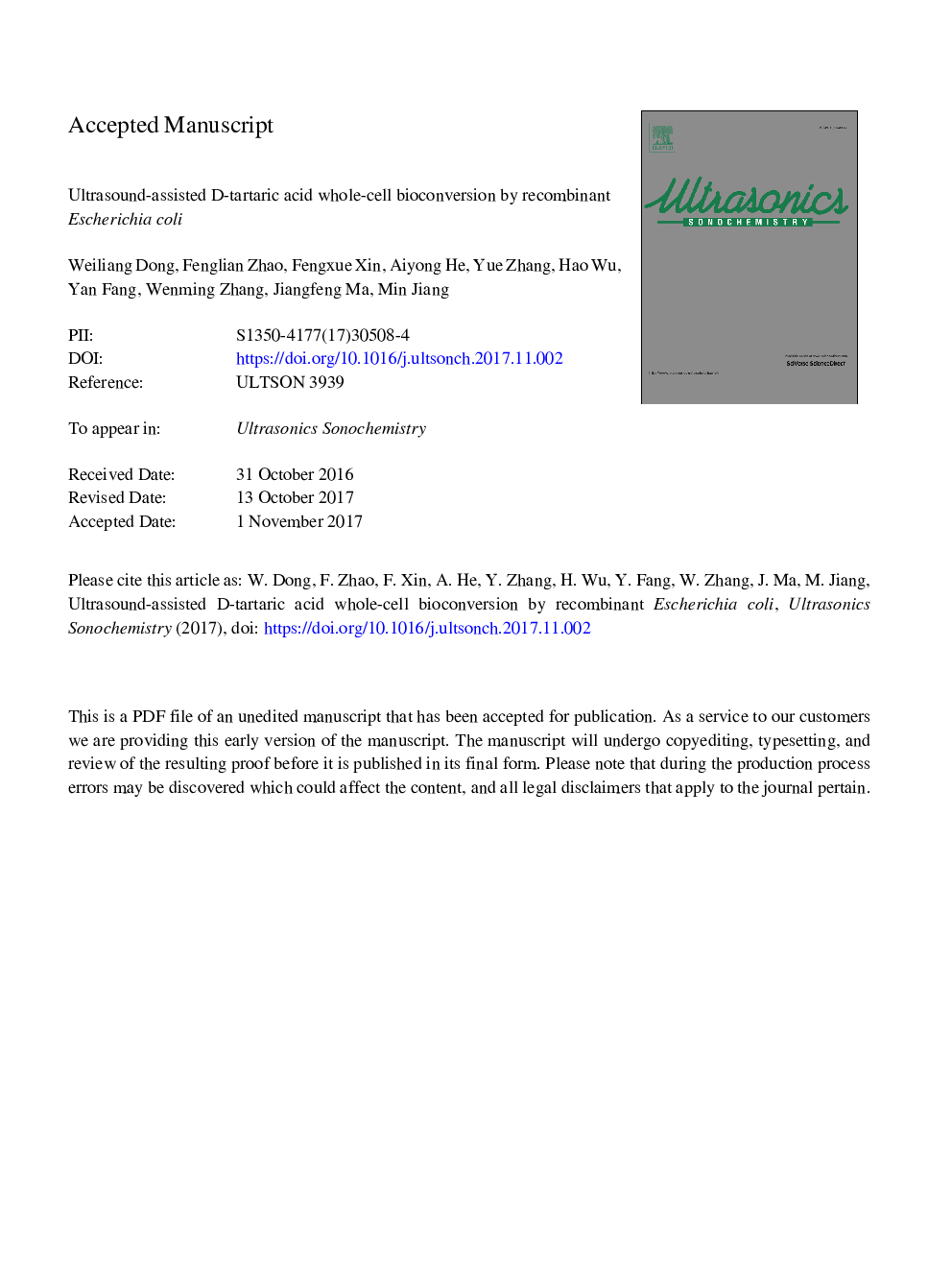| Article ID | Journal | Published Year | Pages | File Type |
|---|---|---|---|---|
| 7702964 | Ultrasonics Sonochemistry | 2018 | 35 Pages |
Abstract
d-Tartaric acid has wide range of application in the pharmaceutical industry and scarcely exists in nature. In this study, cis-epoxysuccinate hydrolase (CESH)-containing Escherichia coli was used to perform whole-cell bioconversion of cis-epoxysuccinate (CES) to D-tartaric acid and the catalytic efficiency was investigated by ultrasound treatment. The bioconversion rate of CES sodium reached 70.36% after 60â¯min treated after ultrasound, which is 3-fold higher than that in the control. The specific rate could be further improved by 2-fold after 5 repeated batches compared with the first one, however, the specific rate gradually decreased with the increase of repeat batches (>5 batches). The CESH from Bordetella sp. BK-52 was a typical Michaelis-Menten enzyme with Vmax and Km values of 28.17â¯mM/h/g WCW (wet of cell weight) and 30.18â¯mM, respectively. The process for the d-tartaric acid bioconversion, which consisted of 102.31â¯g/L CES sodium, 8.78â¯mg/mL whole cell and ultrasound power of 79.36â¯W, is further optimized using response surface methodology. The specific rate finally reached 194.79â¯Â±â¯1.78â¯mM/h/g WCW under the optimal conditions. Furthermore, the permeability of inner and outer membrane was improved approximately 1.6 and 1.4-fold after ultrasound treatment, respectively, which may be a crucial factor for improvement of the bioconversion efficiency.
Related Topics
Physical Sciences and Engineering
Chemistry
Chemistry (General)
Authors
Weiliang Dong, Fenglian Zhao, Fengxue Xin, Aiyong He, Yue Zhang, Hao Wu, Yan Fang, Wenming Zhang, Jiangfeng Ma, Min Jiang,
